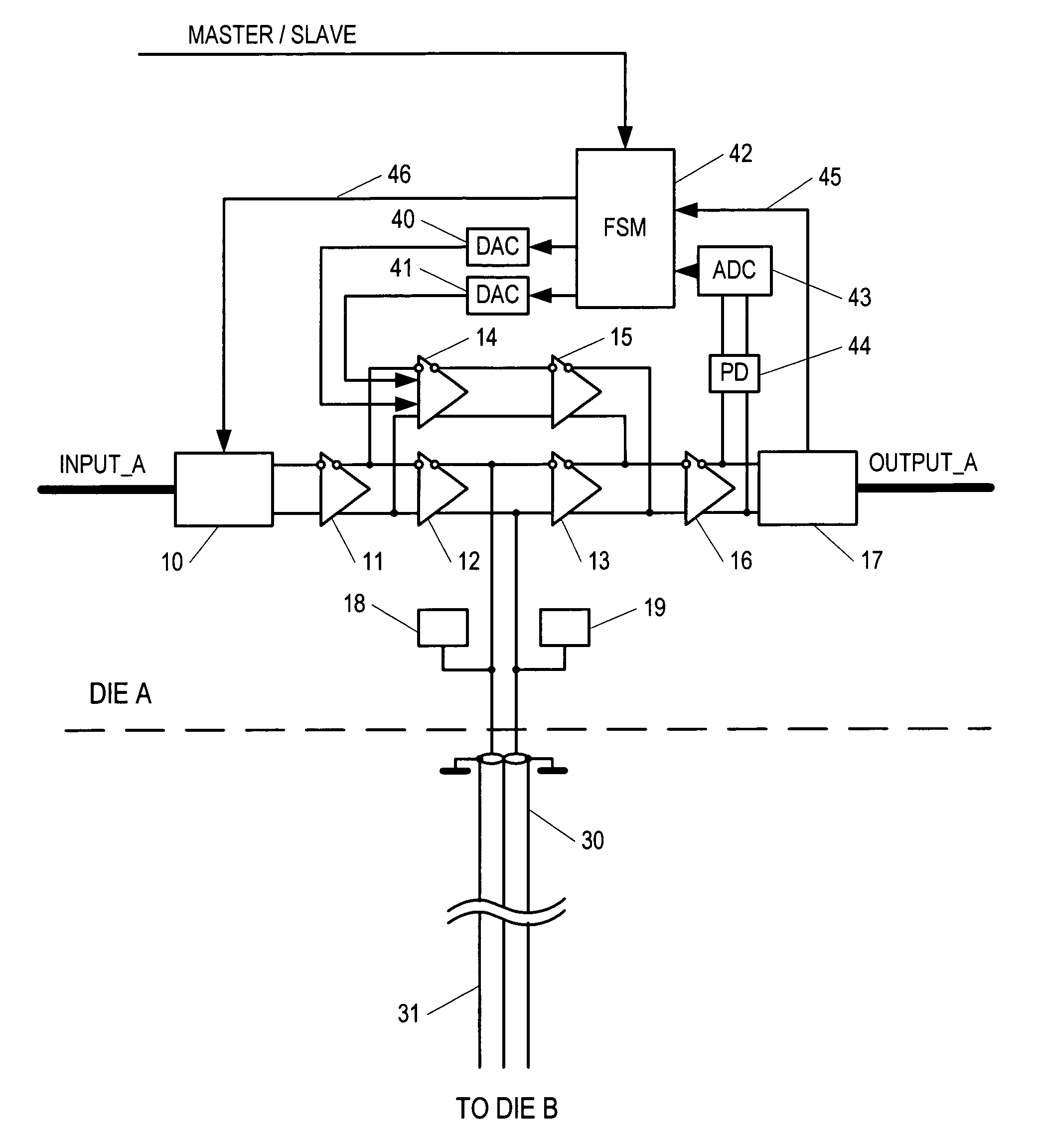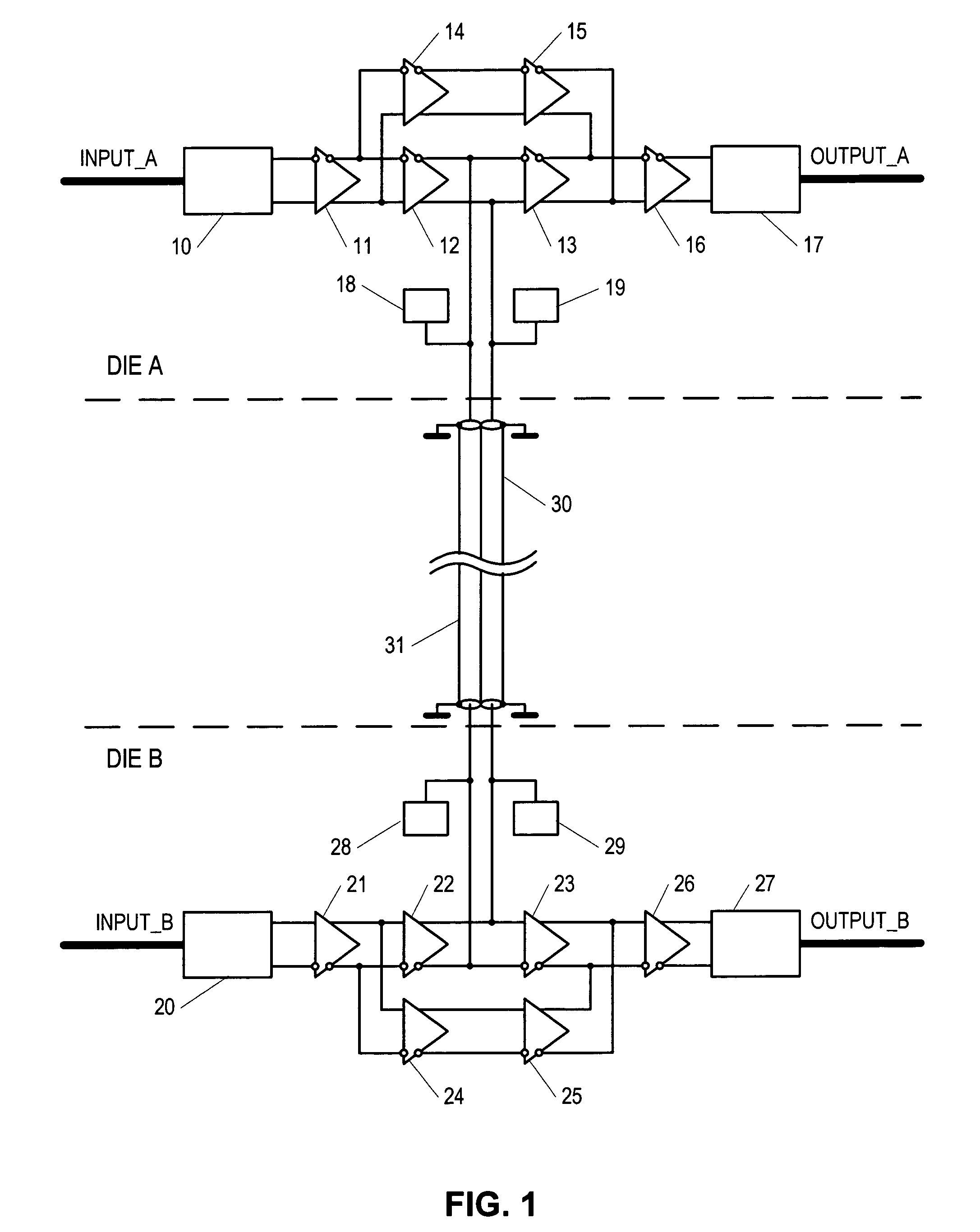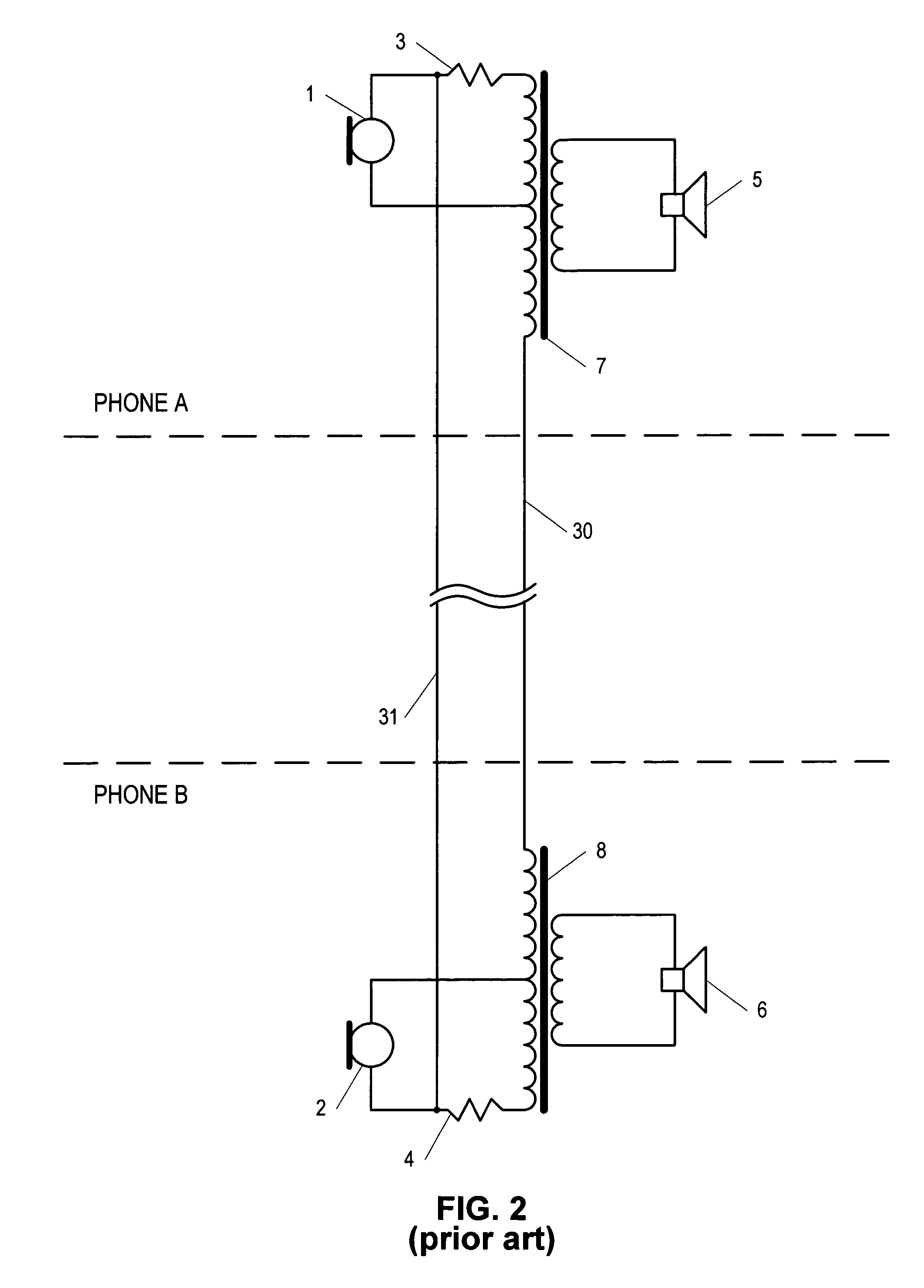Simultaneous bidirectional differential signalling interface
- Summary
- Abstract
- Description
- Claims
- Application Information
AI Technical Summary
Benefits of technology
Problems solved by technology
Method used
Image
Examples
Embodiment Construction
[0080]The invention will now be described in detail without limitation to the generality of the present invention with the aid of example embodiments and accompanying drawings.
[0081]FIG. 1 shows a differential channel, with a pair of signal wires, 30 and 31, connecting two dies, Die A and Die B in a point to point connection. Each die has the same circuit, comprising for Die A, an ESD structure on each wire, 18 and 19, and input buffers 13 and 16 each of which would normally comprising a chain of buffers, which may include integral Miller capacitance compensation and integral signal emphasis or other conditioning. On the same die, an input bus A is serialised by serialiser 10 which may also include other circuits such as verniers, phase or pulse modulating circuits, and then drives a first high speed signal through differential driver stages, 11 and 12, each of which normally comprises a chain of buffers and preferably includes signal pre-emphasis and is preferably structured to com...
PUM
 Login to View More
Login to View More Abstract
Description
Claims
Application Information
 Login to View More
Login to View More - R&D
- Intellectual Property
- Life Sciences
- Materials
- Tech Scout
- Unparalleled Data Quality
- Higher Quality Content
- 60% Fewer Hallucinations
Browse by: Latest US Patents, China's latest patents, Technical Efficacy Thesaurus, Application Domain, Technology Topic, Popular Technical Reports.
© 2025 PatSnap. All rights reserved.Legal|Privacy policy|Modern Slavery Act Transparency Statement|Sitemap|About US| Contact US: help@patsnap.com



